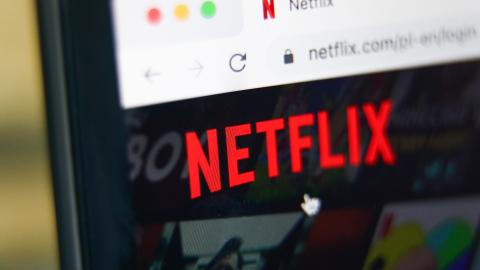Do you enjoy streaming video services like Netflix, Disney+, Max, or YouTube TV because of how different they are than traditional cable TV services? Thanks to Uncle Sam, that might change.
That’s because senior members of Congress have recently floated the idea of the Federal Communications Commission extending regulations that today apply to traditional cable TV companies like Comcast, Charter, and DISH—multichannel video programming distributors, or “MVPDs” in FCC-speak—to online streamers. These wouldn’t just be extended to over-the-top traditional cable competitors like YouTube TV or Sling; they’d also be extended to services like Netflix, Prime, and Disney+, whose offerings bear little or no resemblance to linear cable programming.
For proponents of such a regulatory approach, however, the FCC faces an insurmountable challenge for the time being: it simply does not have the necessary legal authority to regulate these online platforms. FCC Chair Rosenworcel has clearly explained this legal deficiency. Additionally, Congress appears to be divided as to whether to grant the FCC such authority via statute. Some members, such as Senator Cantwell, would like to change the law to allow FCC regulation; others disagree.
Part of the argument for Congressional intervention is that some online streaming services may harm local broadcasters. But it does not follow that the solution is to impose MVPD rules on businesses that are not, in the ordinary sense of the word, MVPDs.
Two of the most heavily regulated industries in the United States are the broadcast and cable TV industries. FCC regulation of these industries reflects their historical origins.
TV broadcasters operate under licenses from the FCC that allow them to broadcast in a specific geographic area at a specific frequency and under specific conditions. And because broadcast TV matured during a bygone era when it and it alone was the primary source of news and entertainment for most Americans, there is a nearly endless accumulation of federal rules associated with its operation. TV broadcasters have special rules for, among other things, the amount of advertising allowed, the types of advertising allowed, mandatory children’s educational programming, and other burdens that online companies have never faced. These broadcast rules apply to broadcasters operating in specific geographic areas of licensure. And ultimately, they raise the cost of broadcasting.
Cable companies were similarly developed in the 1980s in specific geographic markets. Cable companies paid franchise fees to local municipal governments to offer cable services—franchises that have no value outside of the municipality. Congress imposed additional, substantial regulatory burdens on the cable industry in the 1992 Cable Act, the only bill for which Congress overrode a veto by President George H.W. Bush. And again, these cable rules apply to cable operators in a specific geographic area.
Online streaming services are, of course, different. Services like Netflix and Prime operate in national, and often international, markets. And although most major streaming services that Americans enjoy today are based in the United States, many could migrate offshore if Congress attempted to impose untenable new rules on them.
These online streaming services today do not face any FCC rules, much less the burdensome regulations of either the broadcast or cable industries. But consumers clearly love these unregulated online streaming services—perhaps precisely because of their lack of legacy rules and restrictions.
Moreover, today’s MVPD rules do not easily apply to online streaming services. Online services require no local franchises, so there is no local franchise fee. Online streaming services do not have any sort of temporal capacity limitations that would make requirements for public, educational, or governmental channels meaningful. And many of the FCC’s MVPD rules for carriage of local broadcasters make little or no sense for online streaming services which operate nationally or internationally, and which can be access nationally or internationally.
The FCC considered applying MVPD rules to online streaming services in 2014, but it did not adopt final rules. While online streaming services are far more popular today than they were ten years ago, it does not follow that imposing MVPD rules on streaming services makes any more sense today than before. Instead, the opposite is likely the case.
The FCC might consider a simple empirical exercise. Are consumers shifting from unregulated online streaming services to highly regulated MVPD and broadcast TV? Or are consumers shifting from highly regulated MVPD and broadcast services to unregulated online streaming services? The answer is obvious: consumers are fleeing the old for the new. Consumers love watching what they want, when they want, on whatever device they want, unburdened by legacy technologies or government burdens.
Crucially, unregulated services are not equivalent to unlawful services. While they remain unburdened by legacy FCC rules, today’s online streamers must still comply with all applicable federal laws, including those pertaining to pornography and intellectual property protection. Broadcasters’ IP can and must be protected on streaming services, and significant strides have been made in that domain in recent years.
Rather than heed calls for needless and burdensome regulation, the FCC should instead consider the not-so-subtly revealed preferences of consumers. Excessive regulation of the broadcast TV industry benefits neither consumers nor broadcasters. Excessive regulation of the MVPD industry benefits neither consumers nor cable operators. Why would a consumer-friendly FCC seek to extend consumer-unfriendly MVPD regulations to online streaming services that consumers clearly love? There is no good reason.
The better solution would be for the FCC instead to consider how to deregulate the broadcast and MVPD industries so that they can compete more effectively with all sources of programming, including streaming services. The winners would be the American consumers.















